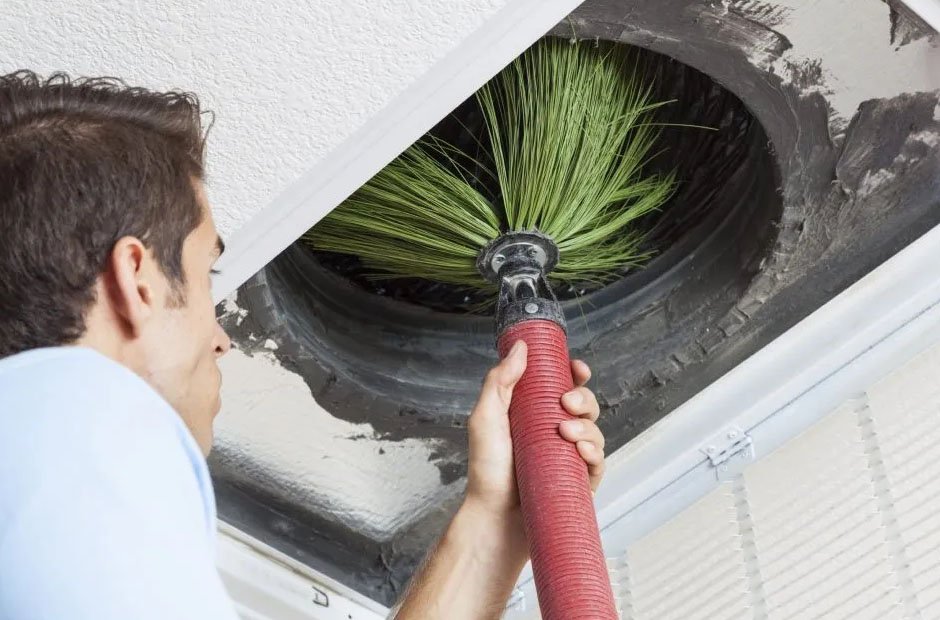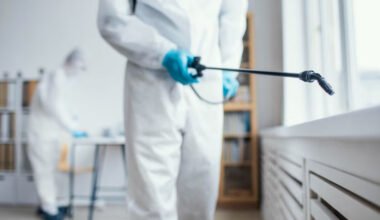If you’ve never had your air ducts cleaned before, it’s normal to wonder what the process looks like. Duct cleaning might sound like a vague or behind-the-scenes job, but it plays a big role in maintaining your home’s indoor air quality and overall HVAC efficiency. Knowing what to expect can help you feel more confident and understand the value of the service.
This article walks through the process step-by-step, explains what professionals do during a duct cleaning appointment, and highlights a few things you should look out for before and after the work is done.
Why People Get Their Ducts Cleaned
Before jumping into the process, it helps to know why people have their ducts cleaned in the first place. Over time, air ducts collect dust, pet dander, pollen, mold spores, and sometimes even pests like insects or rodents. When your HVAC system runs, those particles can circulate through your home. This can be especially noticeable if:
- Someone in the house has allergies or asthma
- There are visible dust puffs when the system starts up
- You’ve recently renovated your home
- You smell something musty near the vents
- Your home is in a dry, dusty climate
While not every home needs duct cleaning regularly, many homeowners notice better airflow and fewer allergy symptoms after having their ducts cleaned.
1. Pre-Appointment Inspection
The first step in a duct cleaning appointment is usually a walkthrough of your home. The technician will ask you questions about your HVAC system, any airflow issues you’ve noticed, and if there are specific areas of concern. Then they’ll inspect your vents and return registers, as well as the furnace and air handler if accessible.
Some pros use cameras or scope tools to look inside the ducts before cleaning. This helps them identify buildup, mold, or any blockages that need special attention.
At this stage, you’ll also get an estimate for the service and a general idea of how long it will take. Most cleanings last anywhere from 2 to 4 hours, depending on the size of your home and the complexity of your system.
2. Protecting Your Home and Setting Up
Before the cleaning starts, the technician will prep the workspace. This usually means covering floors and furniture near vents or work areas to prevent dust and debris from spreading. Some may ask you to move furniture or valuables away from vents ahead of time.
They’ll then set up powerful vacuums, usually truck-mounted or heavy-duty portable systems, designed specifically for duct cleaning. These vacuums are much stronger than household models and create negative pressure inside the ductwork. That pressure helps suck debris toward the vacuum and prevents it from escaping into your home.
3. Cleaning the Supply and Return Ducts
With the vacuum in place, the technician will clean each section of your ductwork one at a time. They’ll remove the vent covers and use a combination of tools like rotating brushes, compressed air whips, or high-pressure nozzles to dislodge dirt and debris.
As they work through the system, the loosened contaminants get pulled into the vacuum. If mold or biological growth is discovered, they might recommend additional steps like sanitation or duct sealing. However, they should never use chemical sprays without your permission.
The technician will clean both supply ducts (which deliver air to your rooms) and return ducts (which bring air back to the HVAC system). This full-system approach is important; cleaning just one side doesn’t get the job done.
4. Cleaning HVAC Components
While duct cleaning focuses on the ductwork, many technicians also clean other HVAC parts, depending on the package or your system’s condition. This can include:
- Blower motor and housing
- Evaporator coil (if accessible)
- Drain pans and drain lines
- Furnace compartments
Cleaning these components can help your HVAC system run more efficiently. Dust buildup on the blower fan or coil can reduce airflow and cause your system to work harder.
According to the U.S. Environmental Protection Agency (EPA), cleaning the entire system, not just the ducts, is essential for preventing contamination from recurring.
5. Post-Cleaning Inspection and Wrap-Up
Once the ducts and components are cleaned, the technician will walk you through what they found. They may show you before-and-after photos or videos taken during the inspection. This can help verify the quality of the work and reassure you that your system is clean.
They’ll reinstall all vent covers, clean up the work area, and double-check that the HVAC system is functioning properly. Some companies might offer to replace your air filter or recommend the right type for your needs.
It’s a good idea to ask questions at this point, such as how often you should clean your ducts or what signs to look out for between cleanings.
Things to Watch Out For
Not every duct cleaning service is equal, and unfortunately, there are scams in this space. Here are a few red flags to watch for:
- Super-low prices that sound too good to be true
- Companies that don’t inspect your ducts first
- High-pressure upselling or claims that cleaning will solve all HVAC issues
- Use of unapproved chemicals or disinfectants without consent
Always choose a licensed and insured technician with good reviews, and look for companies that follow National Air Duct Cleaners Association (NADCA) guidelines.
What You Can Do Afterward
Once your ducts are clean, there are a few things you can do to keep them that way:
- Replace your HVAC air filter regularly
- Dust and vacuum your home often
- Schedule regular HVAC tune-ups
- Keep vents and returns unblocked
- Consider installing a whole-house air purifier if air quality is a concern
Many homeowners find that duct cleaning reduces the amount of dust on surfaces, helps the HVAC system run more smoothly, and improves air quality.
A professional duct cleaning appointment isn’t just about vacuuming out some dust. It’s a step-by-step process that includes inspecting the system, safely loosening and removing buildup, and making sure everything is running right before the tech leaves.
If you’ve noticed signs of buildup, reduced airflow, or allergy symptoms, a thorough duct cleaning might be worth considering. And now that you know what to expect, the process won’t feel like such a mystery.



